Managing the quantity of groundwater supplies
Learn about the availability of groundwater for rural use, the effect of pumping on aquifers and how to manage the use and impact on groundwater. This technical information is for farmers and rural residents.
ISSN 1198-712X, Published June 2021
Introduction
All Ontarians can play a role in protecting groundwater quality and quantity. This is the second fact sheet of seven in a series that will help Ontario’s farmers and rural residents learn more about groundwater and private water supplies. This fact sheet discusses the availability of groundwater for rural use, the effect of pumping on aquifers and how to manage the use and impact on groundwater.
The OMAFRA fact sheets in the groundwater series are:
- Understanding groundwater
- Managing the quantity of groundwater supplies
- Protecting the quality of groundwater supplies
- Private Rural Water Supplies
- Highly vulnerable water sources
- Disinfecting private water wells
- Testing and treating private water wells
Groundwater is a valuable resource for farm and rural families, farming (livestock watering, irrigation, wash water, etc.) and rural businesses, in some situations it may be the only water source. When living in a rural area, it is important to understand what can be done to conserve water usage, reduce contamination and ensure its future abundance.
Groundwater supplies
A water supply well is a hole that is drilled, dug or bored into the ground or underlying bedrock from which groundwater is drawn. Groundwater is also tapped where it naturally flows to the surface in the form of springs. Both springs and wells have been known to slow down or dry up on occasion. A lack of groundwater affects not only well supplies, but also the lakes, rivers and wetlands that depend on groundwater contributions. Information on different types of private water wells is provided in the OMAFRA fact sheet Private rural water supplies.
In Ontario, Regulation 903 (the Wells Regulation) prescribes requirements for the construction, maintenance and abandonment of private water wells. The Wells Regulation requires that the well owner must maintain the well in a way that prevents the entry of surface water and other foreign materials into the well. Proper construction and maintenance of a well will help prevent it from becoming a pathway for surface water and contaminants to reach the groundwater. If a well is no longer used, it must be properly abandoned (plugged and sealed). The requirements for construction change periodically, and it is recommended that well owners refer to the current requirements under the Wells Regulation.
Aquifers are permeable formations at or below the ground surface that yield useful amounts of water when pumped for water supplies. The amount of groundwater that is pumped from an aquifer over time depends on its size (storage capacity), geological composition (ability to transmit water) and water balance (amount of water gained and lost).
A water balance accounts for:
- the water entering an aquifer through recharge and underground flow
- the amount that leaves the aquifer through pumping or underground flow
- the amount that remains in the aquifer
For most untapped aquifers in Ontario, the amount of water entering the aquifer (recharge) during an average year nearly balances or equals the amount leaving (discharge). As a result, the amount of water stored in the aquifer does not change much, it will increase slightly in rainy years and decrease slightly in drier years.
Aquitards are materials that prevent a significant flow of water. Water moves extremely slowly through aquitards. Aquifers and aquitards, and other groundwater concepts, are discussed in more detail in the OMAFRA fact sheet, Understanding groundwater.
Groundwater is just one part of the global water cycle. Precipitation that seeps and infiltrates into the ground becomes groundwater that will then move underground toward a lake, stream or ocean where it discharges to become part of the surface water. Water completes the cycle by evaporating into the atmosphere to become precipitation again.
Well owners can affect the water balance in an aquifer by how the well is pumped. In some cases, an aquifer can be over-pumped to the point that it can no longer produce water. This occurs where aquifers are small, perched or pumped excessively or too rapidly. Perched aquifers are discussed in more detail in the OMAFRA fact sheet Understanding groundwater.
Pumping a supply well
In an aquifer with no water well pumping, water infiltrating the surface seeps down to the water table and then flows horizontally towards a discharge area, such as a stream (Figure 1)
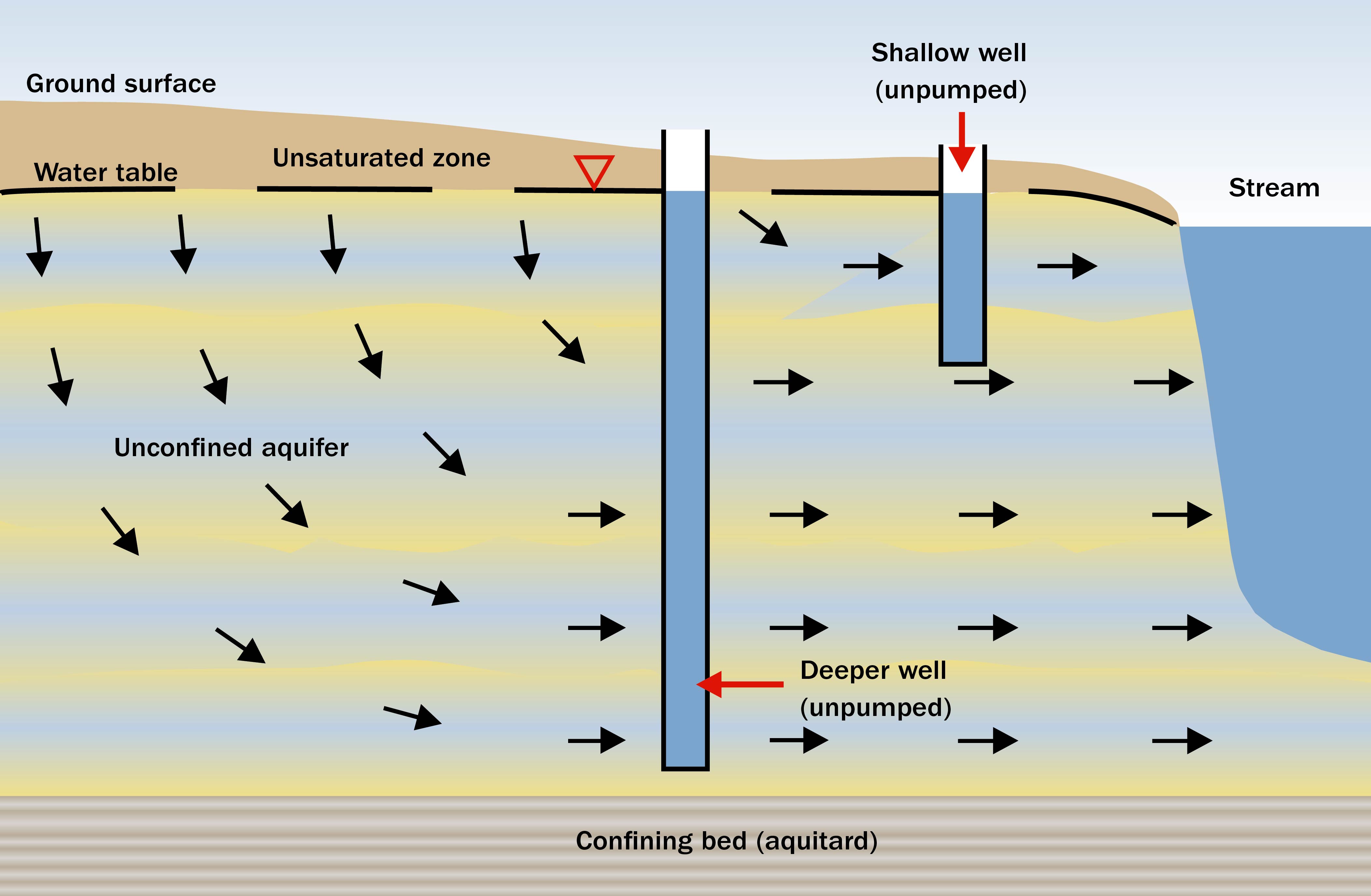
Figure 1. An unconfined aquifer before pumping.
An unconfined aquifer is where the top of the aquifer is also the water table. When a well is pumped in an unconfined aquifer, water is removed from the aquifer, and the water table in the aquifer is lowered. This lowering or drawdown of the water table is greatest close to the well and gets smaller in all directions as the distance from the well increases (Figure 2). This pattern of drawdown in the aquifer is referred to as the cone of depression or the drawdown cone. The size and shape of the cone of depression will grow and shrink as the rate and duration of well pumping change.
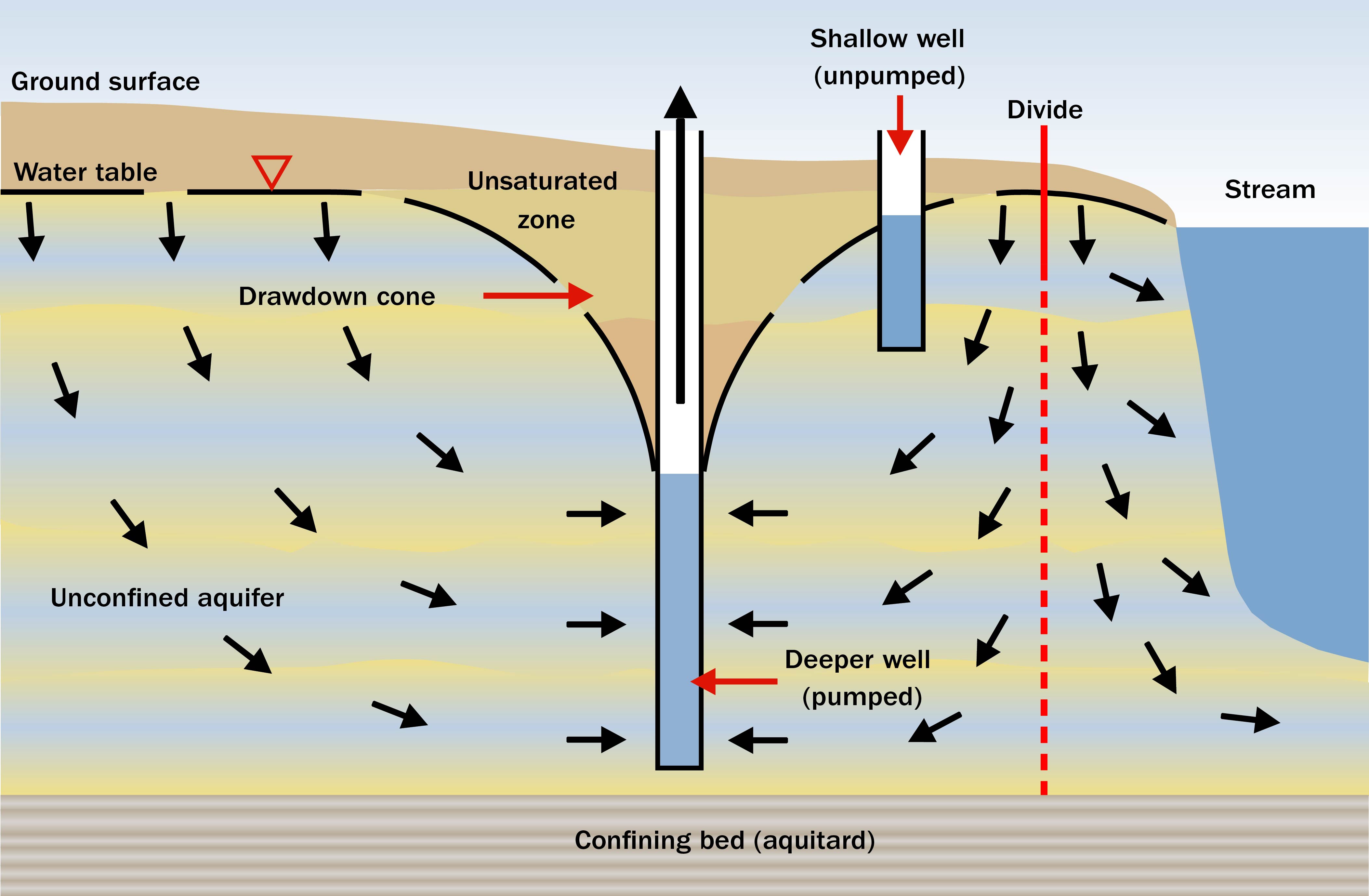
Figure 2. An unconfined aquifer showing the water table during pumping.
Pumping, and the cone of depression it creates, causes water that would normally flow past a well on its way through the aquifer to the stream (as part of the water cycle) to be captured by the pumping well and brought above ground for use. Pumping can create groundwater “divides” or dividing lines that separate areas of groundwater that flow back and are captured by the well from areas that are not. In Figure 2, water recharged to the left of the “divide” will flow towards the well, and water recharged to the right of the “divide” will flow towards the stream. The groundwater removed from the aquifer may eventually be replaced by rain and snowmelt that infiltrates into the ground and seeps to the aquifer. However, the amounts may not exactly balance or recharge at the same time as the withdrawals, and the amount of water stored in the aquifer will change.
In most cases, the pumping well does not capture water from the stream (Figure 2). However, if the well is pumped at a high enough rate or pumped long enough, the flow divide will move towards the stream. This will affect the flow of groundwater into the stream within the zone of capture of the well. In this situation, some surface water could also be drawn into the aquifer as induced infiltration and eventually pumped out of the well. This does not usually occur with private domestic wells but may be encountered with larger capacity wells such as those used by a municipality or industrial operation.
In addition to possibly impacting these surface water features; surface water may contain contaminants (such as pathogens) that can impair the quality of groundwater pumped from a well and make it unsuitable for drinking without treatment. This can be avoided with new wells by locating them away from surface water features. The concerns with pumping surface water, either directly or indirectly, are discussed in the OMAFRA fact sheet Highly vulnerable water sources.
Managing the groundwater resource and well
There are four main causes of running low on water:
- a mechanical problem with water system (worn out pump, hole in water line, well needs to be rehabilitated/cleaned)
- insufficient volume of water (or a low water table) in the aquifer
- pump rate faster than the water can move through the aquifer to get to the well
- well construction insufficient for supplying the volume of water needed
When considering a significant increase in water use, it is important to know in advance if the well, and the aquifer it taps, can supply the amount of water needed. The first step is to check if you have a well record, or see if there is one available from the Ministry of the Environment, Conservation and Parks Wells Help Desk, and determine what well yield and drawdown was at the time of construction for comparison purposes. Then measure (using a water meter) or estimate the current and future water usage. Next, contact a licensed well professional to determine if the well and aquifer can meet the increased demand, and if the well has the proper pump size.
Information about calculating the available drawdown and yield of a well is provided in the section Measuring well drawdown and yield. Groundwater professionals can help determine the well yield, which is the maximum rate that can be pumped from a well and still have the water level in the well remain above the pump intake.
Regulation 903 (the Wells Regulation) requires that a contractor submit a copy of the Water Well Record to the owner of a new, upgraded or abandoned well and the Ministry of the Environment, Conservation and Parks (MECP). Contact the MECP Wells Help Desk to get a copy of the record of your well.
Start a log of actions and measurements that have been taken for your well that can be retrieved later for comparison purposes. The log can include information from the water well record, the date and a description of actions and measurements taken for your well (Figure 3). Examples of well information and measurement log sheets are provided at the end of this fact sheet.
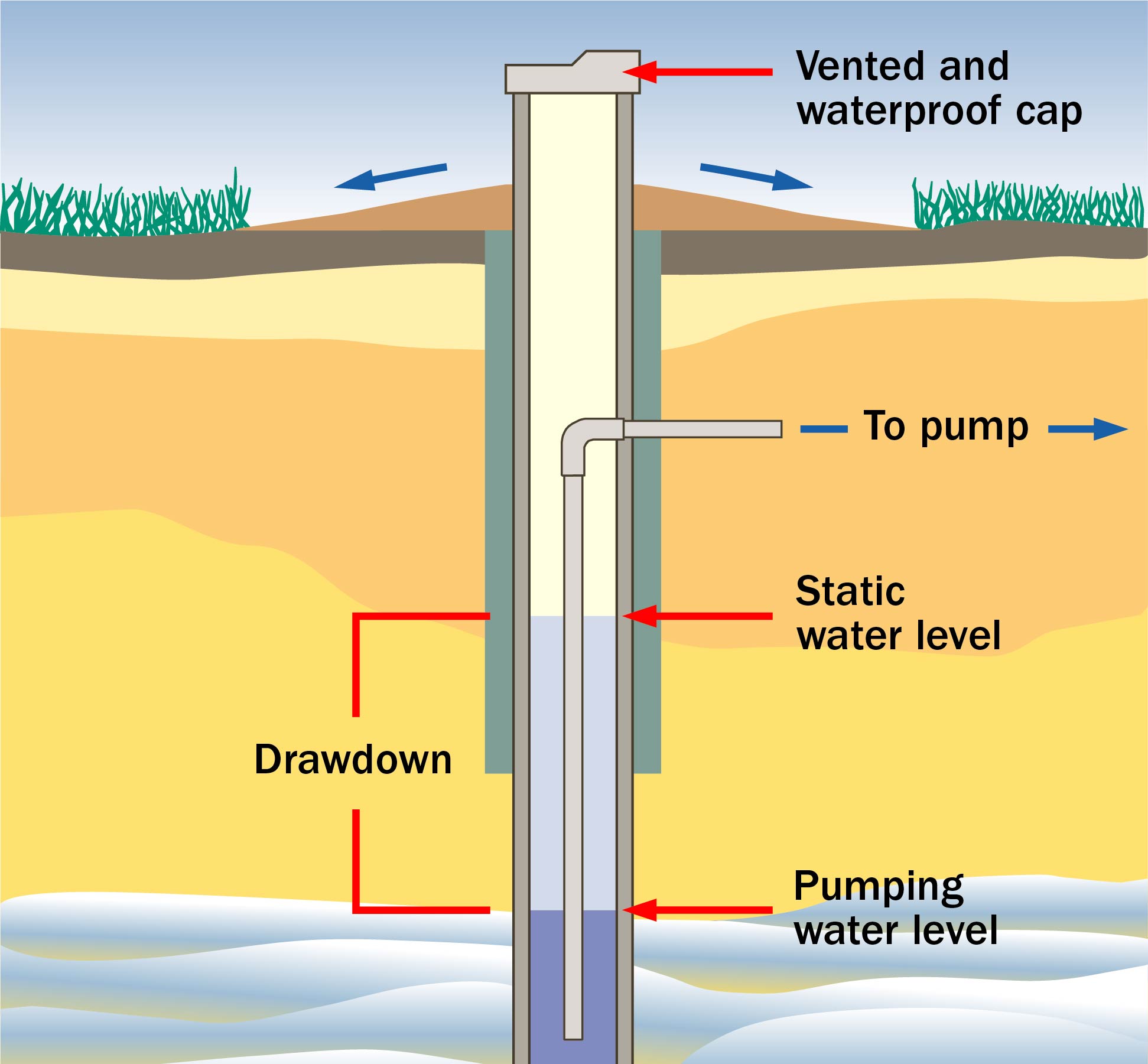
Figure 3. Well water level measurements.
To ensure an ongoing supply of groundwater, consider the following actions:
- reduce the volume of water used by maintaining the system to avoid leakage, and installing water conserving equipment
- reduce the size of the pump, and possibly add storage, to reduce the drawdown during pumping
- modify the system to increase storage by installing a larger pressure tank — this is important if the well has a limited depth of water inside the casing during pumping (limited available drawdown) or if the aquifer is shallow or not very productive.
- clean or rehabilitate the well to improve its performance (using a licensed well professional)
Contact a licensed well contractor for assistance in modifying your water system to manage temporary water supply problems.
There are situations where water levels in the aquifer and the well can drop to the point that water can no longer be pumped. This drop can occur when the demand (pumping) is greater than the supply, when extended dry periods happen or when neighbouring wells have pumped down the water level in the aquifer. Figure 2 illustrates a deep well that has been pumped and has lowered the water level in a shallow well.
There may be some cases where a new larger well, or additional new smaller wells, are needed to provide an adequate water supply. Information on different types of wells is provided in the OMAFRA fact sheet Private rural water supplies.
It may be necessary to try to find a larger and more productive supply (such as a deeper aquifer) that can be tapped for water supply needs. Consult a licensed well professional to find out if there is access to a deeper aquifer below the property with acceptable water quality. Consider tapping into an aquifer that has a lower vulnerability to contamination. The importance of water quality, aquifer vulnerability and the management of highly vulnerable water supplies is discussed in more detail in OMAFRA fact sheets Protecting the quality of groundwater supplies and Highly vulnerable water sources.
Groundwater is a valuable resource for rural families and businesses. When living in a rural area, it is important to understand the effect pumping has on aquifers, what can be done to conserve water usage and how to ensure a future abundance of water.
Measuring well drawdown and yield
Measure the available drawdown and calculate the yield of a well to understand how much water a well can supply for your farm or rural household use. The water level measurements that you may need to know, or want to measure yourself, are static water level and pumping water level. Keep a log of all water measurements and how they were taken, along with the date.
A water well contractor takes these same measurements upon completing a well and notes them on the Water Well Record. These measurements provide a benchmark to see if there has been any change.
The static water level is the “at rest” level in the well (when the pump is not running). When the pump comes on and water is removed, the water level usually drops. How far and how fast it drops depends on the pumping rate, the permeability of the aquifer and the efficiency of the well.
Understanding drawdown
The distance between the static water level and the pumping water level is called the drawdown (Figure 3). If the static level is 2.5 m (8 ft) below the measuring point and the pumping water level is 6.5 m (21 ft), the drawdown is 4 m (13 ft).
Measuring drawdown is an important step to ensure that the source water is adequate and not slowly being depleted. Combine drawdown data with well yield to evaluate the efficiency and performance of a well. Measure drawdown annually.
When the pump starts, the water level drops quickly at first, and then more slowly as the amount of water entering the well approaches the amount being pumped, or as the ability of the pump to draw water decreases with a lower water level. This marks the pumping water level. A low-yielding well can be over-pumped, with the result that the pumping water level drops down to the pump intake.
Make a mark on the top of the well casing and measure to this mark every time. This allows all measurements to be compared. Remember that anything that goes into the well will be mixing with the drinking water, so it must be clean. Anyone who does this procedure should also disinfect the well. Information on disinfecting the well Is provided in the OMAFRA fact sheet, Disinfecting private water wells.
The following section describes step-by-step how to measure water levels, the static water level and the pumping water level (in order to calculate drawdown).
Detecting the surface of the water
To measure water levels, you will need a way of detecting the surface of the water. There are two different methods:
Sounding — A weight on the end of a rope or measuring tape makes a plunking sound when hitting the water surface. By raising and lowering the weight a few times and listening for the “plunk,” a reasonably accurate water level measurement can usually be obtained. A measuring tape will give a direct reading. Mark the rope and the length measured as it is lifted from the well. Disinfect the well following this procedure (Figure 4).
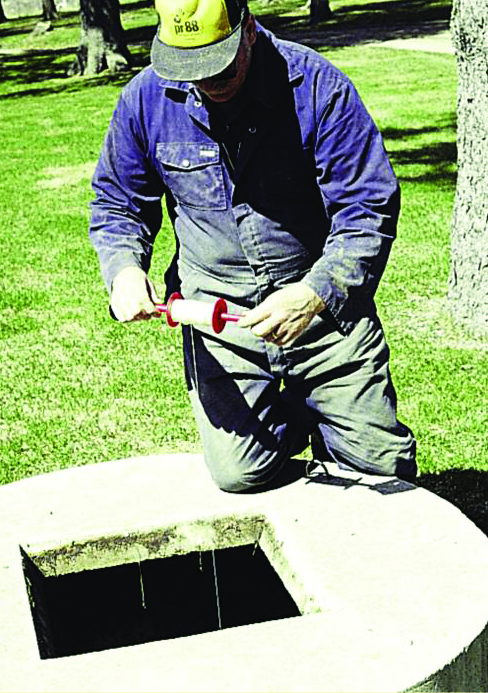
Figure 4. Measuring the depth of water in a private water well.
Electrical — It may be easier to measure levels using a light two-wire electrical line (speaker wire or lamp cord) and an ohmmeter or multimeter. Bare the ends of the wire that go into the well, but make sure the ends don’t touch. Fixing a weight to the end helps keep the line straight. Attach the ohmmeter to the other ends of the wire (don’t plug the wire into an electrical outlet). When the bared ends contact the water surface, current travels through the water and the meter will indicate a complete circuit. The circuit is broken as soon as the wire is lifted free of the water. Measure the length of wire or fasten a measuring tape to the wire for direct readings. Disinfect the well following this procedure.
Information about disinfecting a well is provided in the OMAFRA fact sheet, Disinfecting private water wells.
Measuring static water level
- Turn off the pump or stop all water uses — the pump must remain off until you finish the initial measurement.
- If the pump has been running, wait 10–15 minutes for the water level to recover, then measure the depth to the water. Note that for tight formations such as clay, wait several hours for the water level to recover before measuring
- Wait another 10–15 minutes and measure again:
- if the water level has risen, it is still recovering from pumping
- repeat as necessary until the water level is stable — this is the static water level
Measuring pumping water level
- Start the pump by using water or running an outside hose – the pump must remain on until your measurements are finished.
- After 10 minutes, measure the depth to water.
- Wait 10 minutes and measure again: you may have to repeat this several times until the water level starts to stabilize.
- If the water level stabilizes, record this level and the time you measured it as the pumping water level for the size of pump in use.
- If the water level does not stabilize, run the test for a fixed length of time, say 30 or 60 minutes, and record the level and time
Determining well yield
Take the following steps to test yield:
- Stop all water uses for several hours or a day if possible and measure the water level to the nearest inch or 2 cm. Measure it again in a half hour, and if it has not changed, this is the static level.
- Run water from one source, such as an outside tap.
- Run the water into a large pail (for example, 20 L) and time how long it takes to fill (Figure 5).
- Calculate the pumping rate by dividing the volume by the time (for example, if a 20-L pail fills in 1.25 minutes (75 seconds), the pumping rate is: 20 ÷ 1.25 = 16 L/minute).
- Continue pumping and measure the pumping water level (see above); record the length of time the pump ran and the final pumping water level.
- Turn off the water.
- If the drawdown is small compared to the depth of water in the well, the well can produce more than the pumping rate.
- If the well draws down quickly and the pumping water level is close to the pump intake, the pumping rate exceeds the well’s capacity
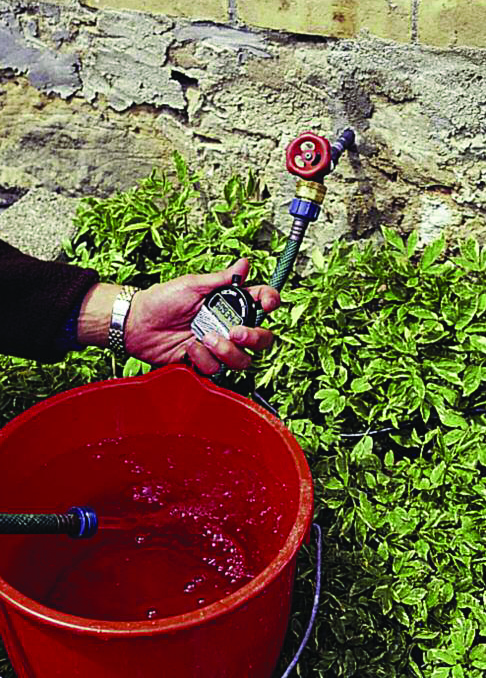
Figure 5. Timing how long it takes for the pump to fill a bucket of water.
Calculating well yield
Dividing the pumping rate by the drawdown will give you the specific capacity of the well. For example:
- pumping rate = 16 L/minute
- static water level = 2.5 m below the measuring point
- pumping water level = 6.5 m below the measuring point
The specific capacity is:
16 ÷ (6.5 – 2.5) = 16/4 = 4 L/minute/m of drawdown
or
3.5 gal/minute ÷ (21 ft – 8 ft) = 0.3 gal/minute/ft
This number becomes useful if the yield test is repeated every couple of years. If the specific capacity declines, the amount of water the well can produce drops. Factors that contribute to a loss in specific capacity include plugging of the well screen or bedrock fractures around the well. Note: the maximum safe yield must not be exceeded. More than one test may be required to determine well yield.
Remember to disinfect the well, and any equipment that was put into it, during and after maintenance. Information on disinfecting the well is provided in the OMAFRA fact sheet, Disinfecting private water wells.
Understanding the availability of groundwater and how pumping affects the aquifers, will help you manage your use and impact on the groundwater resource and help you maintain your water supply in the long term.
This fact sheet is consistent with, but does not reflect the full detail, of the Wells Regulation. For assistance with the Regulation, seek advice from the Ontario Ministry of the Environment, Conservation and Parks (MECP) through the Wells Help Desk. Call
Well information and monitoring log sheets
Well information
Well owners may want to attach the well information sheet (in the PDF) to their water storage tank for recordkeeping.
Resources
Ontario Ministry of the Environment, Conservation and Parks:
Ontario Soil and Crop Association:
- Information on different actions that can be taken to protect the quality of groundwater and your drinking water supply is provided in the Canada-Ontario Environmental Farm Plan workbook and associated Infosheets.
This fact sheet was updated by Dr. Hugh Simpson, program analyst (retired), OMAFRA; Jim Myslik, JPM consulting and Brewster Conant, Jr. It was reviewed by Rebecca Shortt, engineer, water quantity, OMAFRA; John Warbick, engineer, crop systems & environment, OMAFRA.